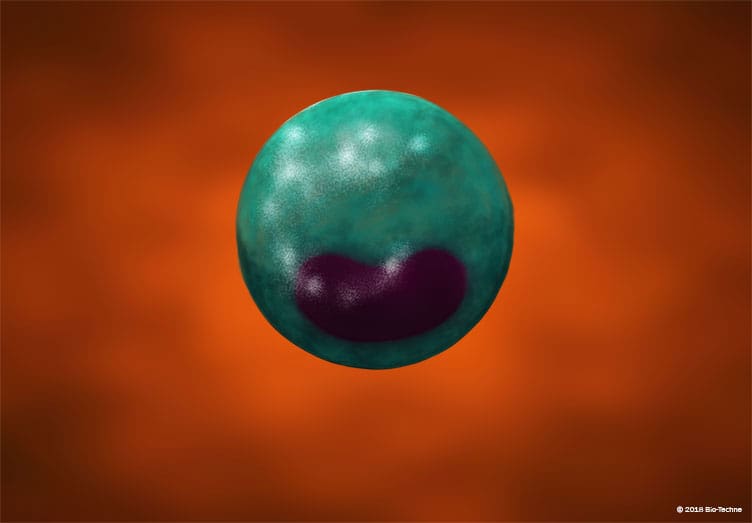Human Classical Monocyte/Mouse Ly-6C+ Monocyte Cell Markers
Click on one of the monocyte subsets shown in the buttons below to see the human and/or mouse markers that are commonly used to identify each cell type.

Overview
Monocytes are a highly heterogeneous population of leukocytes that can rapidly change their phenotypes based on environmental stimuli. In mice, monocytes are commonly identified as CD11b+F4/80+CD115/M-CSF R+ cells. Among these cells, two subsets of circulating monocytes have been characterized based on the differential expression of Ly-6C, CCR2, CD62L/L-Selectin, and CX3CR1. The first subset is Ly-6C+CD62L/L-Selectin+ and expresses high levels of CCR2 and low levels of CX3CR1. This subset is commonly referred to as Ly-6C+ monocytes or inflammatory monocytes as these cells are rapidly recruited to sites of inflammation. In addition to being inflammatory effector cells, Ly-6C+ monocytes are the primary monocyte subset that mediates phagocytosis. The second subset, known as Ly-6C- monocytes, lacks expression of CD62L/L-Selectin, expresses low levels of CCR2, high levels of CX3CR1, and patrols the blood vessel lumen. In humans, three subsets of monocytes have been characterized based on the expression levels of CD14 and CD16/Fc gamma RIII. Classical monocytes are the primary subset found in human blood. This subset expresses high levels of CD14 and lacks expression of CD16/Fc gamma RIII (CD14++CD16-). Like mouse Ly-6C+ monocytes, human classical monocytes express high levels of CCR2 and low levels of CX3CR1. Functionally, they are also similar to mouse Ly-6C+ monocytes in that they are rapidly recruited to sites of inflammation and play a central role in mediating phagocytosis.
